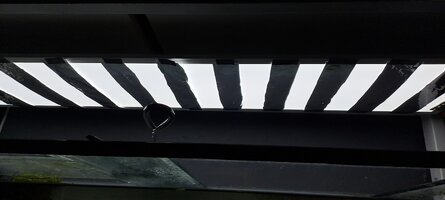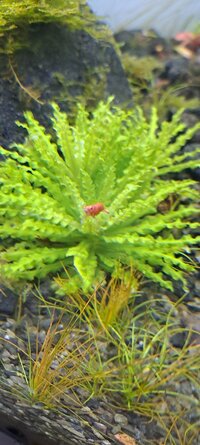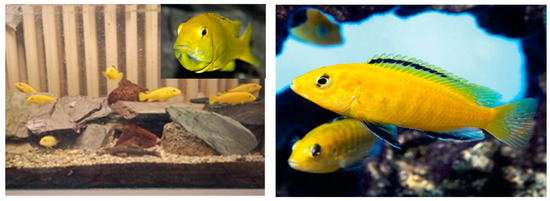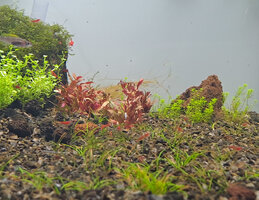I am not sure where this journal will go. I have a few aquariums and would also like to set up a new one soon, but I want to keep a single journal. I guess I am not a skilled aquascaper; I wish I had more of a feel for the artistic angle of aquaristics. So I focus more on the biology/chemistry side of the hobby... I will try to write down my thoughts and experiences with my aquariums, and hopefully, I will also get some insights from the community. I also plan to do a few experiments here and there, mainly to have a closer look at the things that I am interested in at the time.
A little bit about my tanks...
I keep all my tanks low-tech using tap water, which has a hardness of 24 (GH) and 12 (KH). That results in pH values above 8, hence my journal title. It seems to me that keeping plants in soft/low pH water could be more rewarding, but I use my cichlids as an excuse for my stubborn insistence on tap water. Also, I change about 500 liters of water on weekends and like to keep the process simple and fast. So diluting the water with RO water is excluded, at least for now.
I add dry salts in all my tanks, using a single weekly dose of 10 ppm of NO3 (KNO3), 1 ppm PO4 (KH2PO4), and ~17 ppm K (10 from K2SO4 and the rest from the other two). With a 50% weekly water change and low lighting, I expect to have concentrations around double these values in the water. Until a week ago, I dosed Fe-DTPA only (0.1 ppm per week) as a micronutrient and hoped that the tap water would contain all the others. Then I started dosing other micronutrients last week for no reason except that it shouldn't hurt, and who knows, maybe my plants miss something. I realized that my plants might have iron deficiency, so I also increased the Fe-DTPA and started dosing a bit of Fe-EDDHA; that one I add separately. The plan is to add just a little bit until I start seeing some pink coloration in the water. My color blindness does not make the task trivial, though...
This is my DIY micronutrient mix. I'm not sure if there are any major flaws in it, but I guess dosing some of everything besides iron gets the job done:
Fe-DTPA: 0.2 ppm Fe
Borax: 0.03 ppm B
Zinc sulfate: 0.02 ppm Zn
Manganese sulfate: 0.05 ppm Mn
Na2MoO4: 0.0015 ppm Mo
CuSO4: 0.0015 ppm Cu
I mixed these elements in 2% acetic acid to get the indicated ppms after adding 10 mL into 100 liters of water. I split this amount into three doses during the week.
A little bit about my tanks...
I keep all my tanks low-tech using tap water, which has a hardness of 24 (GH) and 12 (KH). That results in pH values above 8, hence my journal title. It seems to me that keeping plants in soft/low pH water could be more rewarding, but I use my cichlids as an excuse for my stubborn insistence on tap water. Also, I change about 500 liters of water on weekends and like to keep the process simple and fast. So diluting the water with RO water is excluded, at least for now.
I add dry salts in all my tanks, using a single weekly dose of 10 ppm of NO3 (KNO3), 1 ppm PO4 (KH2PO4), and ~17 ppm K (10 from K2SO4 and the rest from the other two). With a 50% weekly water change and low lighting, I expect to have concentrations around double these values in the water. Until a week ago, I dosed Fe-DTPA only (0.1 ppm per week) as a micronutrient and hoped that the tap water would contain all the others. Then I started dosing other micronutrients last week for no reason except that it shouldn't hurt, and who knows, maybe my plants miss something. I realized that my plants might have iron deficiency, so I also increased the Fe-DTPA and started dosing a bit of Fe-EDDHA; that one I add separately. The plan is to add just a little bit until I start seeing some pink coloration in the water. My color blindness does not make the task trivial, though...
This is my DIY micronutrient mix. I'm not sure if there are any major flaws in it, but I guess dosing some of everything besides iron gets the job done:
Fe-DTPA: 0.2 ppm Fe
Borax: 0.03 ppm B
Zinc sulfate: 0.02 ppm Zn
Manganese sulfate: 0.05 ppm Mn
Na2MoO4: 0.0015 ppm Mo
CuSO4: 0.0015 ppm Cu
I mixed these elements in 2% acetic acid to get the indicated ppms after adding 10 mL into 100 liters of water. I split this amount into three doses during the week.






